When we found out that Kawah Ijen is ablaze at night in bright blue light of burning sulfur we couldn’t resist. We had to go and verify, even if that entailed waking up at midnight and hiking in the dark, as only in the black of the night you could see the flames. As early as dawn they loose their color and the spectacle is over. The kids were excited to see the volcano magic and didn’t protest that we had to skip sleep for one night. Sometimes I wonder what is wrong with them. They put up with the pace of constant movement, with numerous packing and unpacking, with eating rice for months on end and travelling on buses for hours. Both of them don’t ever question the status quo, which makes our life easier, but should we be concerned that they don’t throw an occasional fit in an attempt to exercise free will? They were born in USA, the land of the free, after all:)
Anyways, getting to the base of the volcano was more challenging than climbing up to the rim of the crater as we had to deal with the Indonesian Volcano Mafia. This is a term of endearment as their game is really pathetic and not worth my time writing about it and yours reading. If you really want to know or you are ever headed to East Java I will e-mail you all of our tips on how to survive the Indonesian scams with a smile.
To cut a long story short we made it in time to see the spectacle and above is our blurry shot of the blue flames. Our night photos would give you no idea of what we experienced so I was lucky that I ****** Love Science posted the movie below on their FB wall this morning. It is made by the French photographer Olivier Grunewald who spent a year photographing volcanoes and captured the surreal beauty of Kawah Ijen in a way that only a photographer can. (if you are viewing this post on a smart phone and can’t see the video, switch to the desktop site at the bottom of the page).
What is the science behind the blue light phenomenon you might ask? Having inquisitive kids is a good motivator to learn new things so I have the answer thanks to Olivier Grunewald. The flames are not lava or from lava as some may erroneously assume. The glow is actually the light from the combustion of sulfuric gases. Those gases emerge from cracks in the volcano at high pressure and temperature—up to 1,112°F (600°C). When they come in contact with the air, they ignite, sending flames up to 16 feet (5 meters) high. Some of the gases condense into liquid sulfur, which continues to burn as it flows down the slopes, giving the feeling of lava flowing. As stunning as the blue flames itself is the fact they supports an impressive mining operation. Escaping volcanic gasses are channeled through a network of ceramic pipes, resulting in condensation of molten sulfur. The sulfur, which is deep red in color when molten, pours slowly from the ends of these pipes and pools on the ground, turning bright yellow as it cools. The miners break the cooled material into large pieces and carry it away in baskets. Miners must carry loads, which range from 75 kilograms (165 lb) to 90 kilograms (200 lb), up 300 metres (980 ft) to the crater rim, with a gradient of 45 to 60 degrees and then 3 kilometers (1.86 miles) down the mountain for weighing. Most miners make this journey twice a day. A nearby sugar refinery pays the miners by the weight of sulfur transported; as of September 2010, the typical daily earnings were equivalent to approximately $13 US. The miners often use insufficient protection while working around the volcano and complain of numerous respiratory afflictions. Some of the miners do have gas masks that visitors have given them, but they have no money and no opportunity to change the filters. Most of them use wet cloths as gas masks for protection. There are 200 miners, who extract 14 tons per day or only 20 percent of the continuous daily deposit. (Thank you Wiki).
Are the flames and the fumes dangerous? Yes they are. They are harmful to breathe in long term but also there is an immediate danger from being overpowered by the smoke and loosing conscience and suffocating. Sadly, as much as 74 miners have lost their lives while working close to the flames. Many day visitors watch the flames from a safe distance but we were too excited not to get closer. We ignored several signs that said “Don’t get close”, “Danger”, “Stay away” and got in the middle of the white smoke so we can zoom in on the little rivers of liquid sulfur when the wind suddenly turned and we were surrounded in sulfur smoke. This volcano was no joke.
This is a shot of one of the miners we passed. These men are so skinny, strong and fit as one needs superman powers to lift the heavy load and then carry it all the way up the crater and then down to the road at the base of the volcano. Many of the miners smoked a cigarette on the way up and wore flip flops. In effort to put ourselves in their shoes we tried lifting a miner’s load. The heavy thing didn’t even budge!
Kawah Ijen Crater Lake, at the top of the volcano, is the world’s largest such body of water filled with hydrochloric acid. It’s the acid that give the water its green color. The volcano emitted hydrogen chloride gas, which reacted with the water and formed a highly condensed hydrochloric acid with a pH of almost 0.
Kawah Ijen is stunningly beautiful. Indonesia as a whole is a breath of fresh air for us. It is lush and green, peaceful and majestic and we have been loving every minute of our time here (minus the Indonesian Volcano Mafia). This country offers a variety like no other place we have visited so far. There are 157 Indonesian islands to be explored and they are all different from each other!
It is totally “mind blowing” as Boryan likes to say.
-M

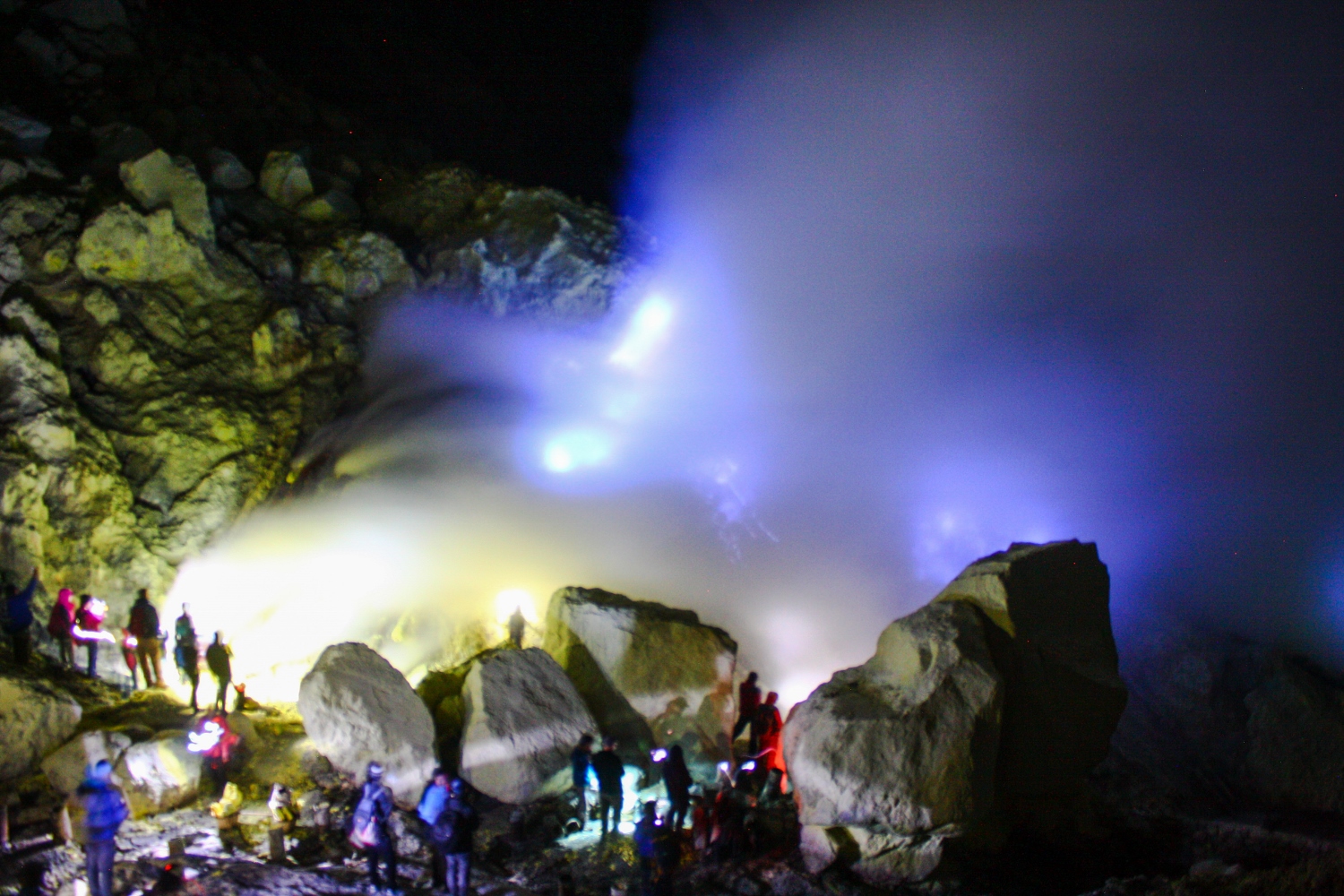
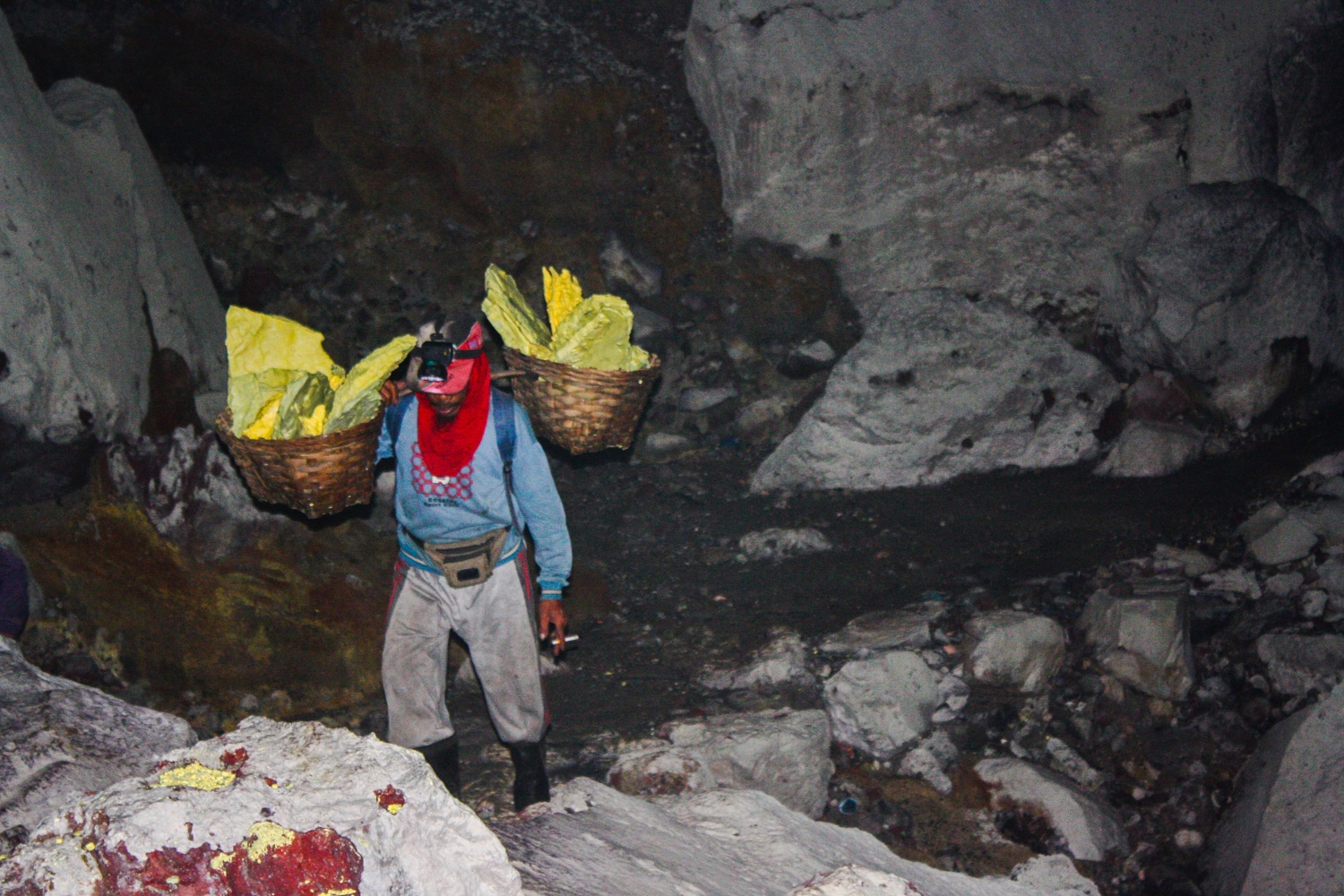
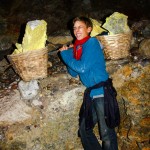
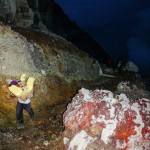
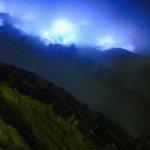
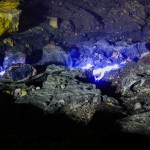
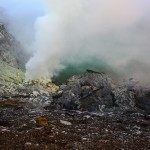
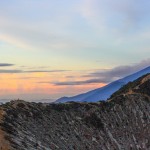
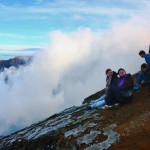
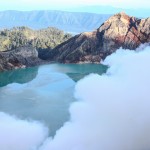
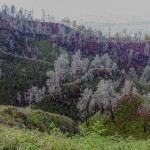
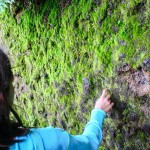
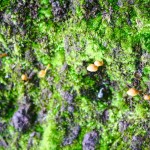
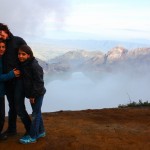
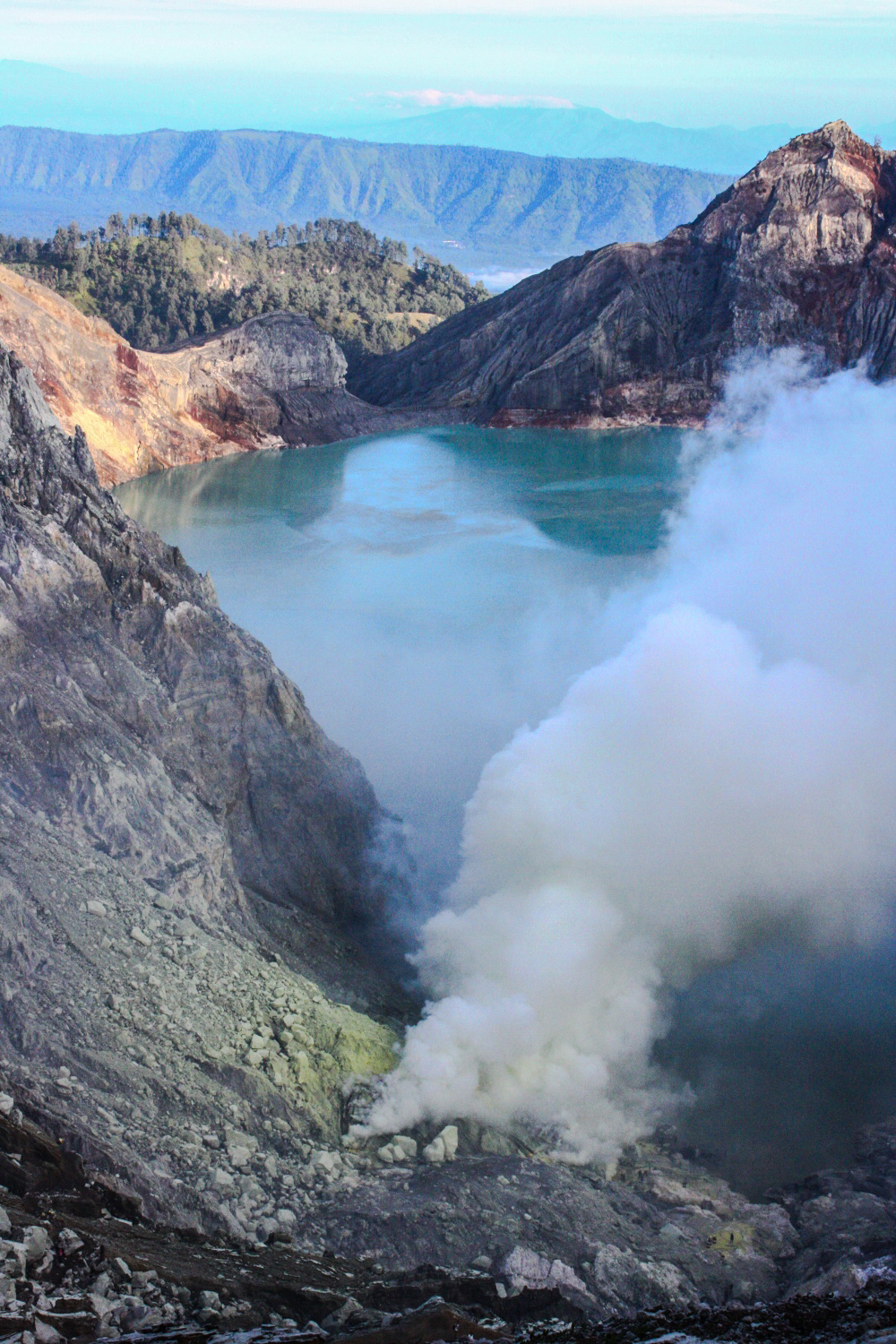
Фантастично е, Мем!
Целувки от нас!!!!
Memcho, thanx for this “National Geographic” account – awesome photos and intro to the country!!
Много беше красиво! Индонезиа много ни хареса, но Непал маи е върха на сладоледа:)
Wonderfull trips and nice picture!
Thanks for sharing superb informations. Your website is so cool. I’m impressed by the details that you have on this website. It reveals how nicely you understand this subject. Bookmarked this web page, will come back for extra articles. You, my friend, ROCK! I found simply the info I already searched all over the place and just could not come across. What a perfect web-site.